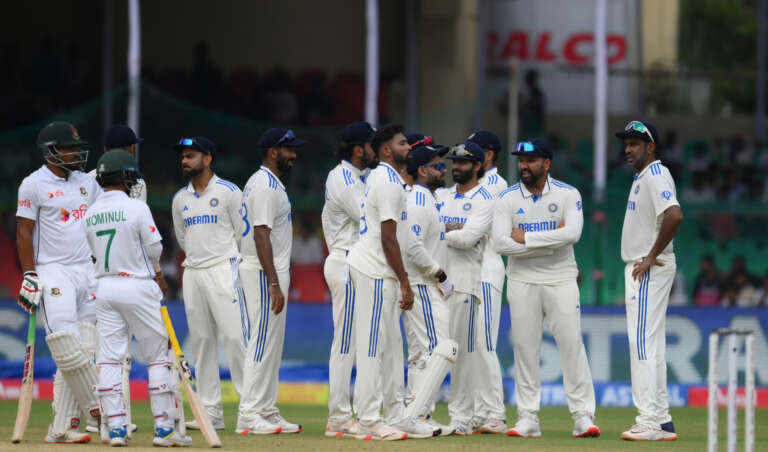Cricket: A Global Game of Strategy, Skill, and Passion
Cricket is one of the world’s most popular sports, boasting a fan base of over two billion people across Asia, Africa, the Caribbean, and beyond. Known for its mix of tradition, skill, and strategy, cricket is more than a game—it is a cultural phenomenon. From the packed stadiums of India to the village greens of England, cricket has captured hearts for centuries and continues to grow as a truly global sport.
Origins and History of Cricket
The sport traces its roots back to 16th-century England, where it began as a pastime for rural communities. By the 18th century, it had become England’s national sport, played in formal competitions and supported by the aristocracy. As the British Empire expanded, cricket spread across the globe to countries such as India, Australia, South Africa, and the West Indies. Today, these nations dominate the international cricket scene, adding their own unique flair and passion to the game.
The Rules of the Game
At its core, it is a bat-and-ball game played between two teams of 11 players each. Matches are played on a circular or oval field, with a 22-yard pitch at the center. The batting side aims to score runs by hitting the ball and running between wickets, while the bowling and fielding side works to dismiss the batters. The team with the most runs at the end of the match wins.
While the basic principles are straightforward, the sport’s many formats—from Test matches lasting five days to Twenty20 (T20) matches lasting just a few hours—create a rich variety of strategic approaches and fan experiences.
Formats of Cricket
- Test Cricket – The longest format, played over five days, considered the ultimate test of endurance, skill, and strategy.
- One Day Internationals (ODIs) – 50-over matches that balance tradition with faster-paced excitement.
- T20 Cricket – The shortest and most explosive format, lasting about three hours and designed for modern audiences and television.
This variety ensures that cricket appeals to both traditionalists and fans who prefer high-energy entertainment.
Major Cricket Tournaments
Cricket thrives on its international tournaments, which draw massive global audiences. The biggest events include:
- ICC Cricket World Cup – Held every four years, the ODI World Cup is the sport’s most prestigious prize.
- ICC T20 World Cup – The premier competition for the shortest format of the game, known for thrilling finishes.
- The Ashes – A historic Test series between England and Australia, dating back to 1882.
- Indian Premier League (IPL) – The world’s most lucrative T20 league, showcasing international stars and drawing millions of viewers.
Cricketing Legends
Here are some of the greatest athletes in its history:
- Sir Donald Bradman (Australia) – Widely regarded as the greatest batter of all time, with an unmatched average of 99.94.
- Sachin Tendulkar (India) – The “Little Master,” holder of numerous batting records and a national hero.
- Viv Richards (West Indies) – Known for his fearless batting and dominance in the 1970s and 80s.
- Muttiah Muralitharan (Sri Lanka) – The most successful bowler in cricket history with 800 Test wickets.
- Ben Stokes (England) – A modern all-rounder celebrated for match-winning performances.
These players not only achieved greatness on the field but also inspired generations of fans worldwide.
Global Popularity and Culture
Cricket is woven into the cultural fabric of many nations. In India and Pakistan, it is more than a sport—it is a unifying passion that brings millions together. In the Caribbean, it reflects the region’s flair, rhythm, and resilience. Australia and England see it as a tradition that blends competition with camaraderie. This cultural richness ensures cricket is celebrated differently in every corner of the globe.
Women’s Cricket
Women’s cricket has grown significantly in recent decades, with stars such as Mithali Raj, Ellyse Perry, and Meg Lanning leading the way. The Women’s Cricket World Cup and Women’s T20 World Cup now attract millions of viewers, reflecting the game’s increasing inclusivity and broad appeal.
Modern Innovations
Technology has reshaped cricket in many ways. The Decision Review System (DRS), Hawk-Eye ball tracking, and ultra-motion cameras ensure fairer outcomes. Short-format leagues like the IPL have introduced franchise systems, big sponsorships, and entertainment that rival any major sporting event. Meanwhile, digital streaming platforms have brought it into households worldwide, expanding its audience far beyond traditional strongholds.
Health and Lifestyle Benefits
Cricket offers both physical and mental benefits. It builds stamina, hand-eye coordination, and teamwork, while also demanding patience and focus. The sport’s community-driven nature—played on school fields, village greens, and professional stadiums—makes it one of the most socially engaging games in the world.
The Future of Cricket
Cricket’s future looks promising as it continues to expand into new markets. The inclusion of cricket in the 2028 Los Angeles Olympics will introduce the sport to new audiences in North America. With investment in grassroots programs and the continued rise of women’s cricket, the sport is set to grow even further in the decades ahead.
Cricket is a sport of tradition, passion, and innovation. Its blend of formats, legendary players, and global fan base ensures its place as one of the world’s greatest games. Whether enjoyed in a five-day Test match or a fast-paced T20 showdown, cricket’s universal appeal lies in its ability to unite cultures, challenge players, and thrill fans worldwide.
Cricket Coverage on WorldSportTalk.com

Cricket Sporting Events in 2025
Cricket Sporting Events in 2025 The cricket calendar in 2025 is packed with high-stakes events, tournaments, thrilling rivalries, and matches that will capture global attention.

The Ultimate Cricket World Cup Guide
The Ultimate Cricket World Cup Guide The ICC Cricket World Cup is the biggest stage in one-day international cricket. Since its launch in 1975, it













